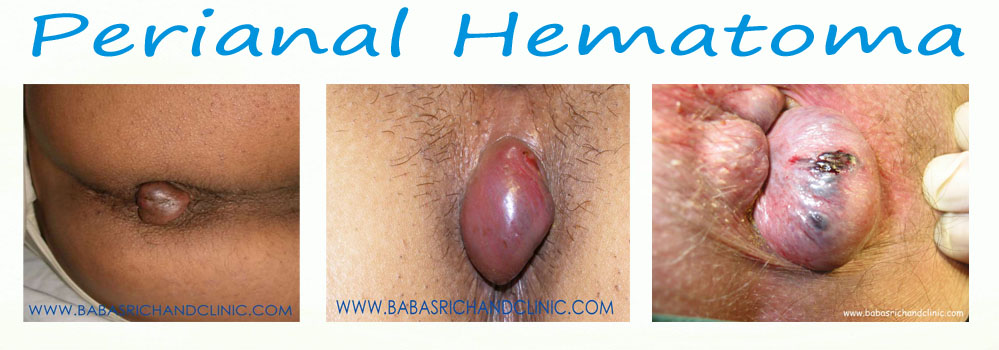What is a perianal hematoma?
Hematoma means “a collection of blood” and peri means “around” so a peri- anal haematoma is a small collection of blood that develops just outside and around the opening of the anus. It is sometimes referred to as an external pile or a thrombotic pile, or an external haemorrhoid, but strictly speaking it is not a haemorrhoid, which is a collection of blood inside the anus.
What are the symptoms?
- Pain which varies from mild to severe.
- Feeling of a lump at the anus.
- Bleeding small flecks of blood occur sometimes.
The pain, which usually comes on sud- denly, seems out of proportion to such a small lump, but the area around the anus is very sensitive.
What aggravates the symptoms?
The pain is worse on sitting, walking and upon opening the bowels.
What does it look like?
It looks like a small purplish swelling at the anus, rather like a semi-ripe blackcur- rant. It is about the size of the fingernail of the little finger and is tender to touch.
What is the cause of perianal haematoma?
It is a rupture of a small vein that drains blood from the anus which has a very rich blood supply. This rupture may be brought on by straining at the toilet, coughing, sneezing or lifting a heavy object. At first there is a very small collection of blood under the skin, but after a couple of hours it forms into a small, firm clot.
What factors predispose to perianal haematoma?
The following are known factors but sometimes it occurs for no clear reason:
- Constipation.
- Sitting for long periods, eg, truck drivers.
- Heavy lifting.
- Pregnancy.
What is the risk?
It is not a serious problem — it has been described as a five-day painful, self-curing lump. However, if it is not treated early by removing the blood or clot it can heal to leave an extra lump of skin called a skin tag, which can be annoying and irritating.
What is the management?
Take simple analgesics such as paraceta- mol for the pain. The haematoma can sub-
side spontaneously and feel quite comfort- able in four or five days. Ointments applied topically can give some relief but are gen- erally not helpful and don’t seem to shrink the lump.
Removal under local anaesthesia:
Doctors usually try to evacuate the blood or clot as it gives rapid relief and prevents the formation of the skin tag. If seen within a few hours of its onset it may be possible to drain the blood with a needle and syringe. Once a clot has formed it is removed simply by a small incision over the lump under local anaesthetic. The wound is not stitched and heals very well, but care has to be taken with bleeding from the wound.
How can it be prevented?
Perianal haematomas and haemorrhoids can be prevented by keeping the bowels regular so that constipation and straining to open the bowels is avoided. Train yourself to have a diet with adequate fibre by eating plenty of fresh fruit, vegetables and wholegrain cereals or bran. Drink lots of water during the day and get plenty of exer- cise, such as a brisk walk for about 30 min- utes each day. Aim for softish bulky faeces that you can pass easily without straining.


